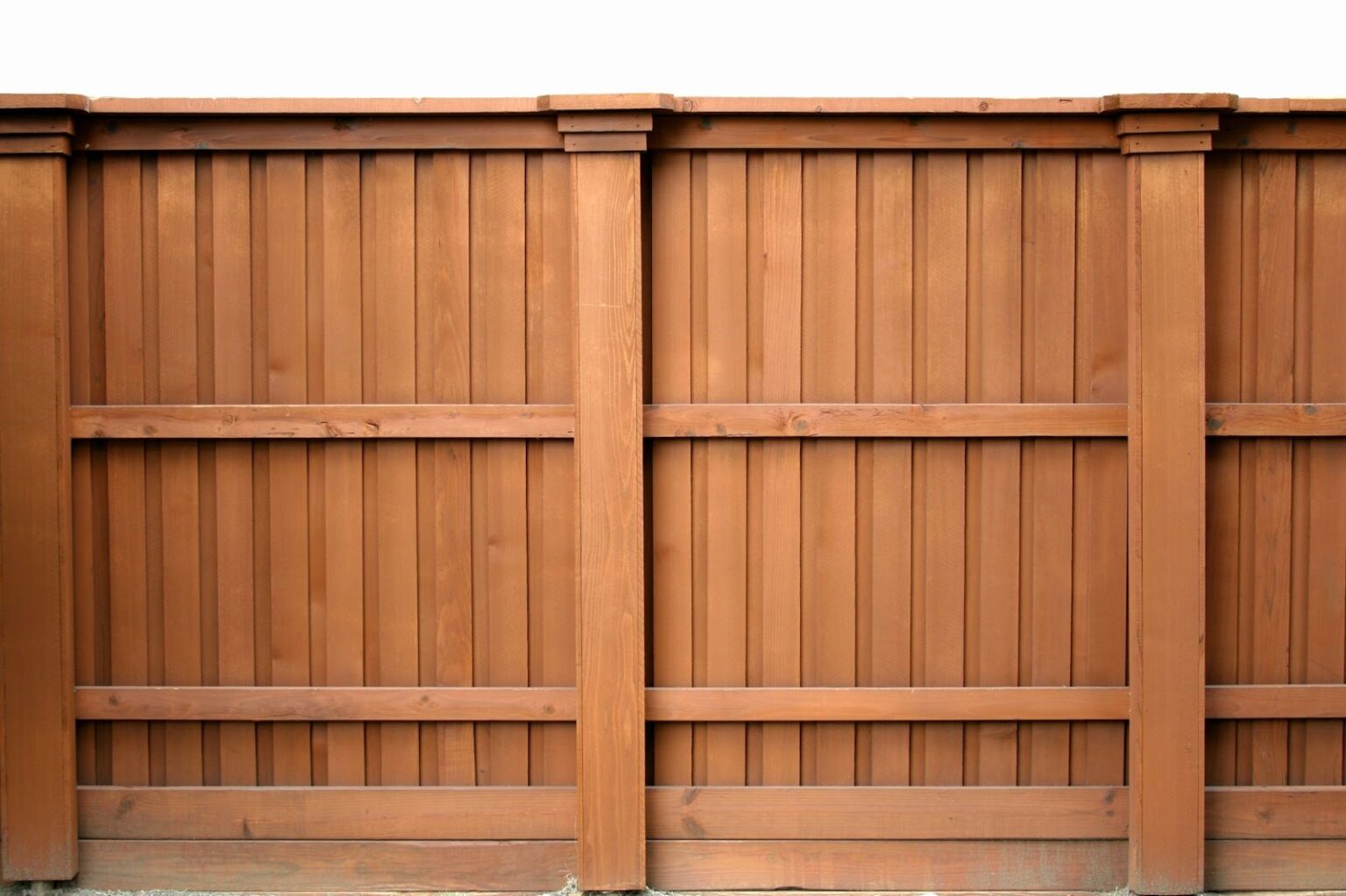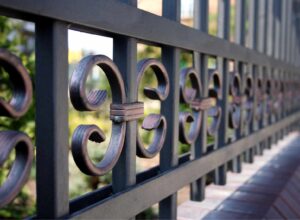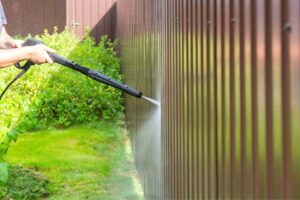Most Popular Types of Privacy Fences for Homes
It doesn’t matter if your neighbors are your best friends in the world — or even if they’re several acres away. Sometimes, you just crave the sense of serenity that comes from turning an open yard into a personal retreat. In such a case, installing a privacy fence can be the perfect solution. Additionally, privacy fences can even increase the value of your property.
Picking out a privacy fence can be an overwhelming experience for many homeowners, given all the options out there. But it doesn’t have to be. For an insider perspective, we spoke to Chris Herman, the Founder of Top Rail Fence, who has over two decades of experience in the fencing business. He provided an overview of the different types of privacy fences and how to choose the right type for you.
What Is a Privacy Fence?
A privacy fence is pretty much what it sounds like: a fence enclosing the perimeter of your home that creates a sense of privacy by blocking views of your property.
What makes a fence a privacy fence? According to Chris, this usually comes down to two factors:
- Fence height: Privacy fences are usually between 6 and 8 feet tall — whatever makes your fence tall enough that neighbors and passersby can’t easily see over it.
- Fence gaps: A solid fence, with fence boards spaced ⅜ to ¼ inches apart, offers total privacy.
A fence that meets these criteria above can also serve as a security fence by making your home uninviting to potential trespassers.
Most Popular Types of Privacy Fences
According to Chris, “Wood and vinyl are the best fence materials for privacy, and they’re also the most popular.”
Wood Privacy Fences
- Pros: Sturdy, easy to repair
- Cons: Regular maintenance needed; structural issues possible over time
- Cost: Mid-range
Wood is the most popular choice of material for a privacy fence. Planks can be placed close together for a gapless enclosure. Pricing varies by wood type, but wood generally carries an affordable price tag. And thanks to the versatility of wood, it’s easy to design a wood fence that complements any home.
Wood fences, however, require regular maintenance. This is because wood is prone to deterioration and susceptible to issues such as rot, fading, and cracking. Every year or two, you’ll need to clean and stain your fence to preserve its appearance and integrity. Still, even with maintenance, you may see some warping over time. Fortunately, wood fences are generally very sturdy and easy to repair. They’re known to last up to 20 years if well built and well maintained.

Types of Wood Privacy Fences
There are many kinds of wood to choose from. The type of wood you choose can impact the aesthetics, maintenance requirements, and lifespan of your fence. Popular choices for perimeter wood fences include:
- Cedar
-
- Pros: Cedar contains natural oils that protect the integrity of the wood over time and deter insects. It’s also highly durable and attractive.
- Cons: Cedar is one of the more expensive wood choices for fences. It also requires yearly maintenance, including cleaning and refinishing.
- Redwood
-
- Pros: Redwood is a durable wood that easily withstands sunlight and all weather, making planks resilient against warping. It’s also resistant to rot and infestation.
- Cons: Redwood is one of the most expensive options and difficult to paint (although many homeowners prefer its natural reddish-brown color).
- Pressure-Treated Wood
-
- Pros: Pressure-treated wood has been chemically optimized to prevent insect infestation and withstand the elements, ensuring a longer lifespan. It’s also the cheapest wood option.
- Cons: Pressure-treated wood can contaminate the ground around the fence with chemicals, making it unsuitable near gardens. It also requires sealing or staining every couple of years.
Vinyl Privacy Fences
- Pros: Sidewalk appeal, easy to clean, high durability
- Cons: More up-front cost, requires more frequent cleaning
- Cost: Most expensive option
Vinyl (aka PVC) carries the highest price tag out of your privacy fence options. At the same time, it offers a long lifespan with little need for repairs or maintenance, which can balance the upfront costs.
Vinyl is also considered by many to be the most attractive option, with a range of shapes and styles to choose from. However, it does have its drawbacks. Vinyl requires regular cleaning, as frequently as every few weeks. It’s also less durable than metal fences, which means it can be damaged by wayward golf balls or hail storms.
Chain Link Fence with a Privacy Screen
- Pros: Affordable, long-lasting, low-maintenance
- Cons: Limited privacy (depending on the privacy screen), less aesthetically pleasing than other options, may not be approved by HOAs
- Cost: Least expensive option
Chain link fences on their own don’t offer much privacy — obviously. But they’re a great option when combined with a privacy screen to diminish visibility. Whether or not this is the most aesthetically pleasing option for your property is, of course, up to you. Unless it’s not — some homeowner associations don’t allow chain link fences. So make sure to check with your HOA before making your purchase.
If this option is available to you, it’s worth noting that chain link fences are the cheapest option for privacy fences.
Privacy Fence Styles
Have you settled on a fence material? The next step is deciding what you want your fence to look like. Here are some of the most popular privacy fence styles for wood and vinyl on the market today:
- Stockade
The first thing people picture when you say “privacy fence” is a stockade-style fence. This is a set of wood planks standing side by side without spaces in between. The top might be rounded or even pointed to deter climbing.
- Shadow Box
Shadow box fences are designed to be shared by neighbors, meaning the view is attractive from both sides. In this design, wood boards overlap in the way many children first learn to artistically arrange popsicle sticks.
- Board on Board
For every two vertical panels, a third is placed between them to close the gap that’s created, adding sturdiness. This style also prevents gaps from occurring in the future, as pickets shrink over the years, helping to maintain privacy over the fence’s lifespan.
- Lock Board
Lock board fences are even sturdier than stockade fences, but they’re built to allow for the natural expansion that takes place with wood over time through a tongue-and-groove interlock. It’s so efficient, it can even block airflow, offering protection from heavy winds.
- Lattice
Lattices are on the higher end of the visibility spectrum, but they do offer some privacy, depending on the size of the latticework. Additional coverage is possible with mesh, screens, or even creeping plants that grow along the fence to block the openings.
- Horizontal
A horizontal fence is essentially a stockade or shadow box style turned 180 degrees. It offers a unique, stylish appearance. It can also cost more, as it requires higher-grade wood to prevent sagging over time.
Installing a Privacy Fence
Building a privacy fence yourself is definitely a lot cheaper than buying one and hiring a contractor to install it for you. But for many people, price isn’t the only consideration when it comes to fence installation.
“Digging holes can be a miserable job,” laughs Chris, who has spent the better part of his career digging fence post holes himself.
“Not to mention,” he adds, “the average fence job requires 3 tons — that’s 6,000 pounds — of materials, which need to be bought, transported home, and then moved to the fence site on your property.”
Installing a fence on your own doesn’t just require physical strength and endurance. When installing a fence, you’ll need to:
- Accurately plan your project, which includes figuring out where to dig, measuring your particular build, and calculating the materials you’ll need
- Invest in fence building tools such as a post digger spades, a spirit level, power drill, drill bits, wheelbarrow, and more
- Make sure you’re staying within your property lines
- Obtain a building permit if required
- Research utility lines to avoid hitting them during your project
Hiring a Fence Contractor
Oftentimes, the most practical approach to installing a fence is partnering with an experienced contractor, who can ensure your fence is securely installed in a timely fashion. When you call in the professionals, you can be sure they’ll get the job done right and in accordance with local fencing regulations. Homeowners can even save money in the end by avoiding potential legal liabilities and future repairs, which can result from DIY fence installations.
At Top Rail Fence, we’re dedicated to offering only high-quality fence products installed by trained professionals. When you choose Top Rail’s premium fencing options and installation, you’re making an investment that will bring you privacy, security, and peace of mind for years to come.
Looking for help with your fence project? Contact our team for a free quote.


